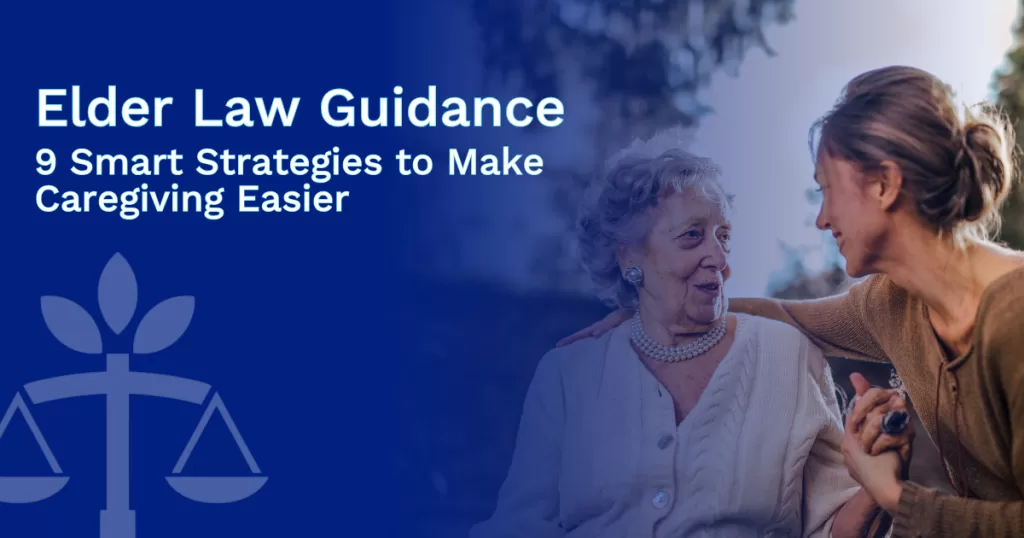I met with a client from Georgetown last week who looked absolutely exhausted. When I asked how she was doing, the floodgates opened. She’d been caring for her 84-year-old mother with Parkinson’s for the past three years while also working part-time and raising teenagers.
“I feel like I’m drowning,” she admitted. “I love my mom, but I don’t know how much longer I can do this.”
This conversation isn’t unusual in my Cedar Park office. As an elder law attorney serving Central Texas families, I see firsthand how caregiving can be both deeply meaningful and incredibly demanding.
Today, I want to share nine practical strategies I’ve gathered from working with hundreds of family caregivers over the years. These approaches can help you provide excellent care while protecting your own wellbeing.
1. Set and Communicate Clear Boundaries
The most stressed caregivers I meet are often those trying to do it all. They’re on call 24/7, neglecting their own needs, and quickly burning out.
Establishing boundaries isn’t selfish—it’s essential for sustainable caregiving. This might mean:
- – Designating specific times when you’re unavailable
- – Being clear about which tasks you can and cannot handle
- – Learning to say “no” without guilt
I remember a client who was fielding calls from her mother at all hours, disrupting her sleep and family life. We worked together to establish a communication schedule—her mother would call only during certain hours unless it was an emergency. This simple boundary dramatically improved both their relationship and my client’s mental health.
The key is clear communication. Explain your boundaries with compassion: “Mom, I need to sleep between 10 PM and 6 AM to stay healthy and be a good caregiver. Unless it’s an emergency, let’s talk during the day.”
Setting boundaries now prevents resentment and burnout later. Think of it as necessary maintenance for your caregiving journey.
2. Ask for—and Accept—Help
Many of the family caregivers I counsel struggle with an “I should handle this alone” mindset. This thinking isn’t just unrealistic—it can be dangerous for your health.
I often recommend creating a “care team” approach, even if you remain the primary caregiver. This might include:
- – Siblings or other family members
- – Friends and neighbors
- – Paid caregivers (even for just a few hours weekly)
- – Community volunteers
One effective strategy is to create a specific list of tasks others can help with. When someone says, “Let me know if I can help,” you’ll be ready with concrete requests: “Could you pick up Mom’s prescriptions this Thursday?” or “Would you sit with Dad for two hours next week so I can attend my daughter’s recital?”
Remember that accepting help isn’t a sign of failure—it’s a sign of wisdom.
3. Establish a Consistent Daily Routine
In my elder law practice, I’ve noticed that caregiving arrangements with clear routines tend to run more smoothly. Routine creates predictability, which benefits both caregivers and care recipients.
This is especially important when caring for someone with cognitive decline. As one neurologist explained to a client of mine, “For someone with dementia, unpredictability feels like constant anxiety.”
A basic daily schedule might include:
- – Regular wake-up and bedtimes
- – Consistent meal times
- – Structured medication schedule
- – Designated activity periods
- – Regular rest times
Don’t aim for military precision—just enough consistency to create a comfortable rhythm. Even small predictable patterns can significantly reduce stress and confusion.
4. Use Technology to Lighten the Load
I’m always surprised how many caregivers aren’t taking advantage of modern technology to make their lives easier. You don’t need to be tech-savvy to benefit from simple digital tools.
Here are some practical tech solutions my clients have found helpful:
- – Medication management apps like Medisafe that send reminders when it’s time for the next dose
- – Shared family calendars where everyone can see appointments, medication schedules, and who’s on duty when
- – Smart home devices that can set reminders, play music, control lights, or even allow video check-ins when you’re not there
- – Grocery delivery services that save you hours of shopping time each week
- – Medical alert systems that provide peace of mind when you can’t be physically present
One client told me that setting up automatic prescription delivery alone saved her nearly three hours each month—time she now uses for self-care.
5. Take Care of Your Own Health
This might be the most important advice I give to caregivers: Your health matters too.
I’ve seen too many dedicated caregivers end up in the hospital themselves because they neglected their own wellbeing. The harsh reality is that if you become seriously ill, who will care for your loved one then?
Make these non-negotiable:
- – Keep your own medical appointments
- – Get sufficient sleep (even if it means arranging respite care)
- – Eat regular, nutritious meals
- – Find time for some form of movement or exercise
- – Attend to your mental health through therapy, support groups, or simply quiet time
One client shared that she schedules her own doctor appointments on the same day as her mother’s, making it a “health day” for both of them. Creative solutions like this can help ensure you’re not putting your own health last.
6. Embrace the Quiet Moments
Caregiving is filled with tasks and responsibilities, but don’t miss the quiet moments of connection that make it meaningful.
I encourage caregivers to find small ways to be present with their loved ones beyond the necessary care routines. This might mean:
- – Looking through old photo albums together
- – Sharing a favorite dessert
- – Watching a classic movie
- – Simply sitting together in companionable silence
These moments aren’t just nice—they’re nourishing. They remind us why we chose to take on this caregiving role in the first place.
Wait—did you notice we’re about halfway through? Take a deep breath. These strategies get more practical as we continue.
7. Work With Your Loved One—Not Against Them
I’ve noticed that caregiving relationships work best when the care recipient maintains as much autonomy as safely possible.
Even when cognitive abilities are declining, most older adults still want and deserve to have choices. Whenever possible:
- – Offer options rather than commands (“Would you prefer to bathe in the morning or evening?” versus “It’s time for your bath”)
- – Involve them in planning their care when appropriate
- – Respect preferences about clothes, food, and daily activities
- – Allow them to do what they still can, even if it takes longer
This approach preserves dignity and often reduces resistance to necessary care. As one geriatric physician told a client of mine, “Independence isn’t all-or-nothing. Every small choice matters.”
8. Explore Support Resources in Your Community
Central Texas has a wealth of resources for caregivers, but many people don’t know where to start looking. Here are some local options worth exploring:
- – Area Agency on Aging programs that offer respite care, transportation, and meal services
- – Adult day centers that provide supervised activities and socialization
- – Caregiver support groups through local hospitals and community centers
- – Faith-based volunteer programs that may offer companion visits or practical help
- – Meal delivery services specifically for seniors
I always encourage my clients to reach out to these organizations—they exist specifically to make caregiving more manageable.
Don’t wait until you’re in crisis to seek support. The best time to connect with resources is before you desperately need them.
9. Get Legal and Long-Term Planning Support
As an elder law attorney, I see how proper legal planning can dramatically reduce a caregiver’s stress and prevent future complications.
Every caregiving situation benefits from having these elements in place:
- – Durable Power of Attorney designating who can make financial decisions if your loved one becomes unable to do so
- – Medical Power of Attorney clarifying who makes healthcare decisions
- – Advance Directive/Living Will documenting end-of-life care preferences
- – Guardianship arrangements (if needed for someone who’s already incapacitated)
- – Long-term care planning to address how care will be funded if needs increase
These documents aren’t just paperwork—they’re protection. They ensure your loved one’s wishes are honored and give you clear authority to act on their behalf when necessary.
I worked with a family recently who put off getting a power of attorney for their father. When he had a stroke, they couldn’t access his accounts to pay for his care. The resulting guardianship process cost them months of stress and thousands of dollars—all of which could have been avoided with proper planning.
If you take nothing else from this article, please consider this: legal planning is preventive medicine for caregiving challenges.
The Journey Is Yours, But You're Not Alone
Caregiving is both a marathon and a series of daily sprints. Some days will feel overwhelming, while others will bring moments of profound connection and gratitude.
What matters most is developing sustainable practices that allow you to provide good care without sacrificing your own wellbeing. The strategies I’ve shared aren’t theoretical—they’re battle-tested by hundreds of Central Texas caregivers I’ve had the privilege of advising.
Remember that asking for help isn’t a luxury—it’s a necessity. And having proper legal documents in place isn’t just paperwork—it’s protection for everyone involved.
If you’re navigating the caregiving journey and need guidance on the legal aspects of elder care, my door is always open. Together, we can ensure you have the tools and support you need for this important role.

